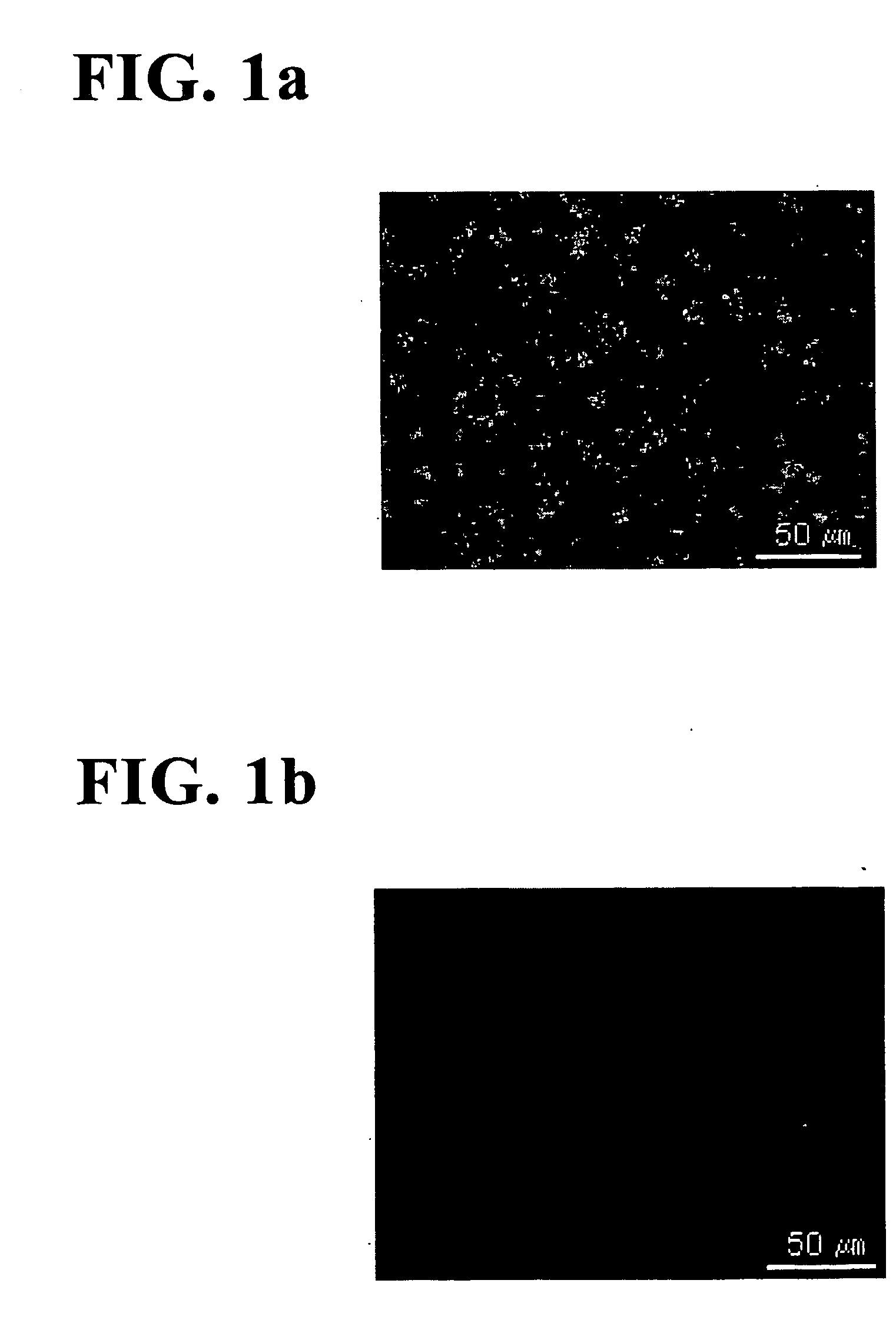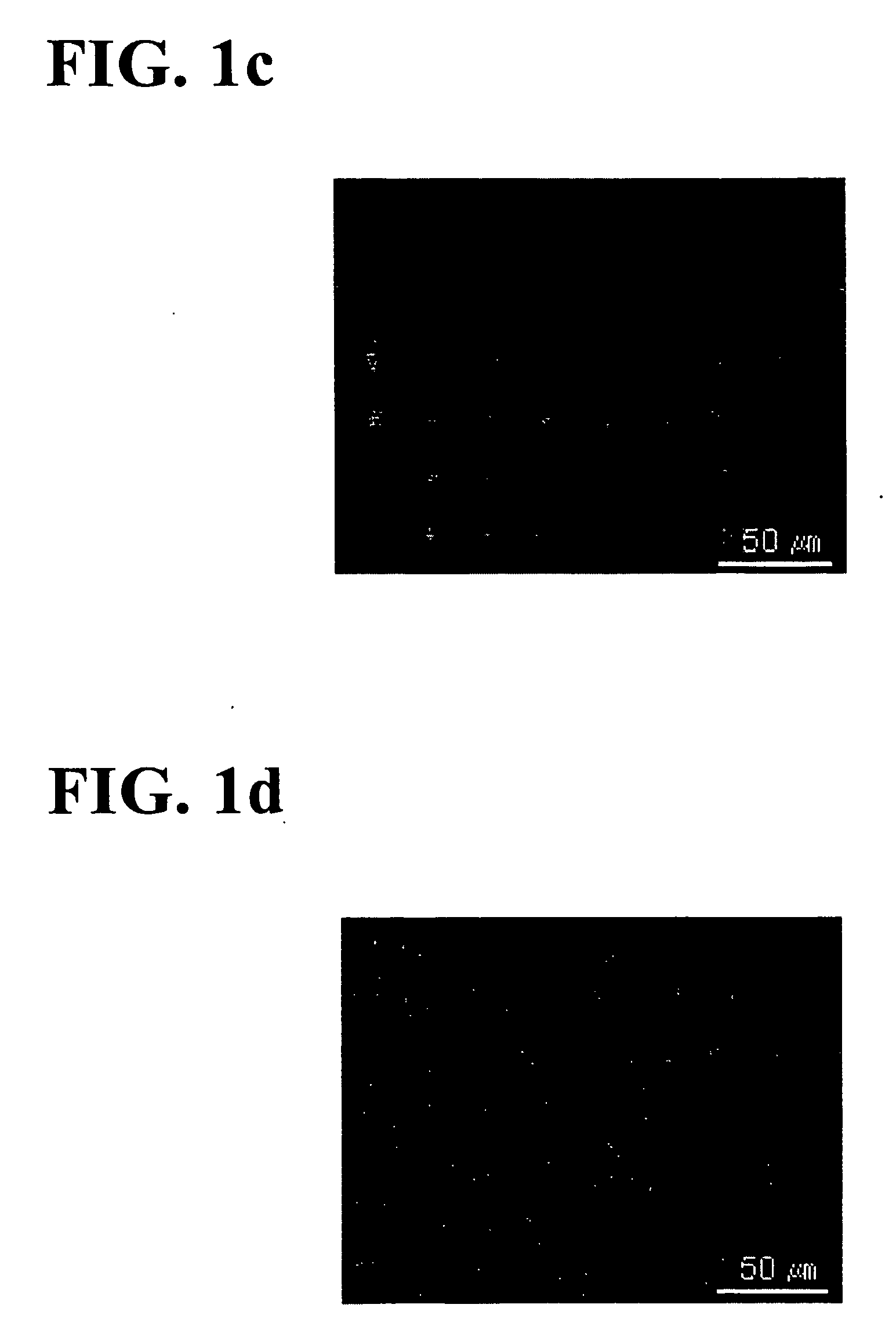Composite polymeric electrolyte membrane, preparation method thereof
- Summary
- Abstract
- Description
- Claims
- Application Information
AI Technical Summary
Benefits of technology
Problems solved by technology
Method used
Image
Examples
example 1
[0098] While 100 g of 5 wt % commercially available Nafion.RTM. / H.sub.2O / 2-propanol (Solution Technology Inc., EW=1,100) solution was stirred at room temperature for 48 hours, the solvent was evaporated off to give about 5 g of Nafion.RTM. gel, which was then added with 95 g of dimethylacetamide (DMA), yielding about 5 wt % Nafion.RTM. / DMA solution. Such a solution was preheated in a water bath at 60.degree. C. for 24 hours to evaporate off the remaining moisture. Separately, 5 g of PVDF (Elf Atochem America, Inc., Kynar Flex.RTM. 761) was dissolved in 95 g of DMA to prepare 5 wt % PVdF / DMA solution, after which 20 g of the above solution was mixed with 50 g of 5 wt % Nafion.RTM. / DMA solution. 5 g of zirconium hydrogen phosphate (ZHP) was added to 95 g of 2-propanol (IPA) and stirred at room temperature for 48 hours, and further at 50.degree. C. for 48 hours using a jar mill (trade name: Two Tier Mills, Cole-Parmer Co.) with a zirconia ball of 10 mm diameter. Thereby, zirconium hydr...
example 2
[0103] While 100 g of 5 wt % commercially available Nafion.RTM. / H.sub.2O / 2-propanol (Solution Technology Inc., EW=1,100) solution was stirred at room temperature for 48 hours, the solvent was evaporated off to give about 5 g of Nafion.RTM. gel, which was then added with 95 g of dimethylacetamide (DMA), yielding about 5 wt % Nafion.RTM. / DMA solution. This solution was preheated in a water bath at 60.degree. C. for 24 hours to evaporate off the remaining moisture. Separately, 30 g of PVdF (Elf Atochem America, Inc., Kynar Flex.RTM. 761) powder was dispersed in 200 g of 5 wt % KOH / methanol at 80.degree. C., stirred for 1hour, filtered, washed with methanol and dried. The dried PVDF was stirred in 1 M aqueous sulfuric acid solution at 80.degree. C. for 4 hours, filtered, washed with water and dried in a vacuum oven of 80.degree. C. 5 g of PVDF powder, treated with base and strong acid, was dissolved in 95 g of DMA to prepare 5 wt % PVdF / DMA solution. Thereafter, 20 g of the above soluti...
example 3
[0107] 100 g of 5 wt % commercially available Nafion.RTM. / H.sub.2O / 2-propa-nol (Solution Technology Inc., EW=1,100).solution was stirred at room temperature for 48 hours, and thus the solvent was evaporated off to prepare about 5 g of Nafion.RTM. gel, which was then added with 95 g of dimethylacetamide (DMA), yielding about 5 wt % Nafion.RTM. / DMA solution. This solution was preheated in a water bath at 60.degree. C. for 24 hours to evaporate off the remaining moisture. Separately, 5 g of PVDF (Elf Atochem America, Inc., Kynar Flex.RTM.761) was dissolved in 85 g of DMA to obtain a PVdF / DMA solution, which was vigorously stirred at 60.degree. C. for 3 hours while 2 g of potassium t-butoxide in 10 g of DMA was added dropwise thereto. 20 g of the above solution was mixed with 50 g of 5 wt % Nafion.RTM. / DMA solution.
[0108] 5 g of zirconium hydrogen phosphate (ZHP) was added to 95 g of 2-propanol (IPA) and stirred at room temperature for 48 hours, and further at 50.degree. C. for 48 hours...
PUM
| Property | Measurement | Unit |
|---|---|---|
| Temperature | aaaaa | aaaaa |
| Diameter | aaaaa | aaaaa |
| Electric charge | aaaaa | aaaaa |
Abstract
Description
Claims
Application Information
 Login to View More
Login to View More - R&D
- Intellectual Property
- Life Sciences
- Materials
- Tech Scout
- Unparalleled Data Quality
- Higher Quality Content
- 60% Fewer Hallucinations
Browse by: Latest US Patents, China's latest patents, Technical Efficacy Thesaurus, Application Domain, Technology Topic, Popular Technical Reports.
© 2025 PatSnap. All rights reserved.Legal|Privacy policy|Modern Slavery Act Transparency Statement|Sitemap|About US| Contact US: help@patsnap.com



